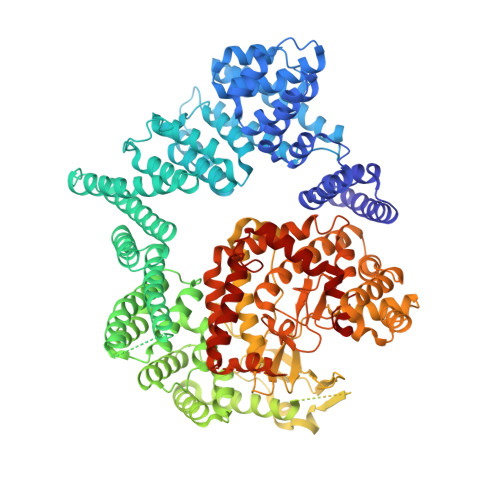Structure of the human dimeric ATM kinase.
Lau, W.C., Li, Y., Liu, Z., Gao, Y., Zhang, Q., Huen, M.S.(2016) Cell Cycle 15: 1117-1124
- PubMed: 27097373
- DOI: https://doi.org/10.1080/15384101.2016.1158362
- Primary Citation of Related Structures:
3JBZ - PubMed Abstract:
DNA-double strand breaks activate the serine/threonine protein kinase ataxia-telangiectasia mutated (ATM) to initiate DNA damage signal transduction. This activation process involves autophosphorylation and dissociation of inert ATM dimers into monomers that are catalytically active. Using single-particle electron microscopy (EM), we determined the structure of dimeric ATM in its resting state. The EM map could accommodate the crystal structure of the N-terminal truncated mammalian target of rapamycin (mTOR), a closely related enzyme of the phosphatidylinositol 3-kinase-related protein kinase (PIKK) family, allowing for the localization of the N- and the C-terminal regions of ATM. In the dimeric structure, the actives sites are buried, restricting the access of the substrates to these sites. The unanticipated domain organization of ATM provides a basis for understanding its mechanism of inhibition.
- a School of Biomedical Sciences, The University of Hong Kong , Hong Kong.
Organizational Affiliation:



















